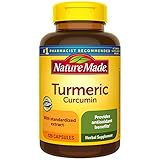Table of Contents
The turmeric plant and other hot spices are crucial in tropical diets. Without them, food preservation and digestion would be difficult in warm climates. Good use of herbs proves popular wisdom once more.
- PREMIUM USDA ORGANIC Turmeric POWDER (Curcumin Longa) – Our Gulten Free Organic Turmeric Root Powder is packed in a resealable kraft bag to maintain freshness!
- PURITY – No Colors, NO Additives, No Preservatives, and NO ETO Treatment.
Turmeric is one of the essential ingredients of curry, a hot sauce that consists of turmeric, pepper, coriander, ginger, cloves, cardamom, cumin, and nutmeg. This blend makes an explosive mixture for unaccustomed stomachs.
Turmeric Plant Scientific Facts

- Other names: Curry.
- French: Curry, saffran des Indes.
- Spanish: Curcuma.
- Environment: It is native to the Island of Java but has spread to other tropical Asian countries, Central American countries, and the West Indies.
- Description: The vibrant plant of the Zingiberaceae family grows up to one meter high. It has from five to ten large leaves with long petioles. Its flowers are white or yellowish, and its rhizome grows up to 10 cm in diameter.
- Parts of the plant used medicinally: The rhizome (underground stem).
Healing Properties and Indications

The rhizome of the turmeric plant contains an essential oil, coloring substances, a bitter component, organic acids, resin, and starch. It is a stomachic invigorator similar to ginger. Turmeric increases the production of gastric juice, thus easing digestion of lack of appetite or dyspepsia. It is also used for chronic gastritis and hypochloridria (lack of hydrochloric acid in the stomach).
It also has cholagogue that (promotes the emptying of the gall bladder) and carminative (eliminates intestinal gas) properties. In some Central American countries, turmeric is used to decrease cholesterol levels.
How to use Turmeric
- Infusion with 15-20g of rhizome per liter of water. Drink a cup during meals.
- Powder: One gram a day, distributed into three intakes.

Asian Turmeric
In Southeast Asia, there are several plants of the Curcuma genus (Curcuma purpurascens Blume., Curcuma xantorrhiza Roxb., Curcuma pierreana Gagner.) Some were cultivated because of the arrowroot (a nutritive flour) obtained from their roots. The species purpurascens is also appreciated because of its medicinal properties, which are practically the same as American turmeric. The species xantorrhiza is known as amboima, and the similar species Curcuma pierreana bears the name of false arrowroot.
Frequently Asked Question
I understand curcumin is the star compound in the turmeric plant, but how much is it available to my body?
Unfortunately, curcumin has poor bioavailability, so your body struggles to absorb it efficiently. Combine turmeric with black pepper (its piperine content helps) and healthy fats like olive oil to boost absorption. Some supplements also optimize curcumin delivery.
Can the turmeric plant rival the benefits of some medications?
Studies show the potential for turmeric’s anti-inflammatory action to compare with certain medications for conditions like arthritis. However, always consult a doctor before changing your prescribed medication.
I’ve read about the turmeric plant for heart health. Is there truth to this?
There’s some evidence! Studies hint at curcumin’s potential to reduce “bad” LDL cholesterol and protect against heart disease risk factors.
What dosage can I safely consume each day?
Generally, experts advise up to 500-2,000 mg of turmeric powder daily, often in divided doses. High doses long-term might cause digestive upset. Specific dosages vary depending on the condition being addressed. Consulting your healthcare practitioner is crucial.
Can everyone take turmeric plant supplements?
No. There are some contraindications. Turmeric may interfere with blood thinners, diabetes medications, and some others. Pregnant and breastfeeding women, as well as people with gallbladder issues, should exercise caution. Always talk to your doctor first!
I prefer whole foods. Does cooking with turmeric powder offer benefits?
Yes, but it may be limited. While delicious, the curcumin absorbed from a spice dose is likely small compared to concentrated supplements designed for health purposes.
Does turmeric topically help with skin issues?
There’s potential. Turmeric paste has traditionally been used on the skin. Some small studies indicate potential benefits for inflammation, wound healing, and conditions like acne or psoriasis.
Are there quality differences in turmeric supplements?
Absolutely! Choose reputable brands with third-party testing, standardized curcumin content, and clear ingredient lists. Look for forms designed to boost curcumin absorption.
Will eating turmeric turn my insides yellow?
Highly unlikely! Turmeric used in cooking won’t cause noticeable staining. Extremely high doses of concentrated curcumin in supplements could temporarily alter urine color, but this is harmless.
DISCLAIMER: All content on this website is presented solely for educational and informational objectives. Do not rely on the information provided as a replacement for advice, diagnosis, or treatment from a qualified medical expert. If you are pregnant, nursing, or have any preexisting medical concerns, talk to your doctor before using any herbal or natural medicines.
REFERENCES
- George D. Pamplona-Roger, M.D. “Encyclopedia of Medicinal Plants.” George D. Pamplona-Roger, M.D. Encyclopedia of Medicinal Plants. Ed. Francesc X. Gelabert. vols. 2 San Fernando de Henares: Editorial Safeliz, 2000. 450. Print. [turmeric plant]
- NCBI – Turmeric, the Golden Spice: https://www.ncbi.nlm.nih.gov/books/NBK92752/
- Johns Hopkins Medicine – Turmeric Benefits: https://www.healthline.com/nutrition/top-10-evidence-based-health-benefits-of-turmeric
- NCCIH: https://www.nccih.nih.gov/health/turmeric
Last update on 2024-07-25 / Affiliate links / Images from Amazon Product Advertising API



![NatureWise Curcumin Turmeric 2250mg 95% Curcuminoids & BioPerine Black Pepper Extract Advanced Absorption for Joint Support [1 Month Supply - 90 Count]](https://m.media-amazon.com/images/I/31NtGrtPTZL._SL160_.jpg)

